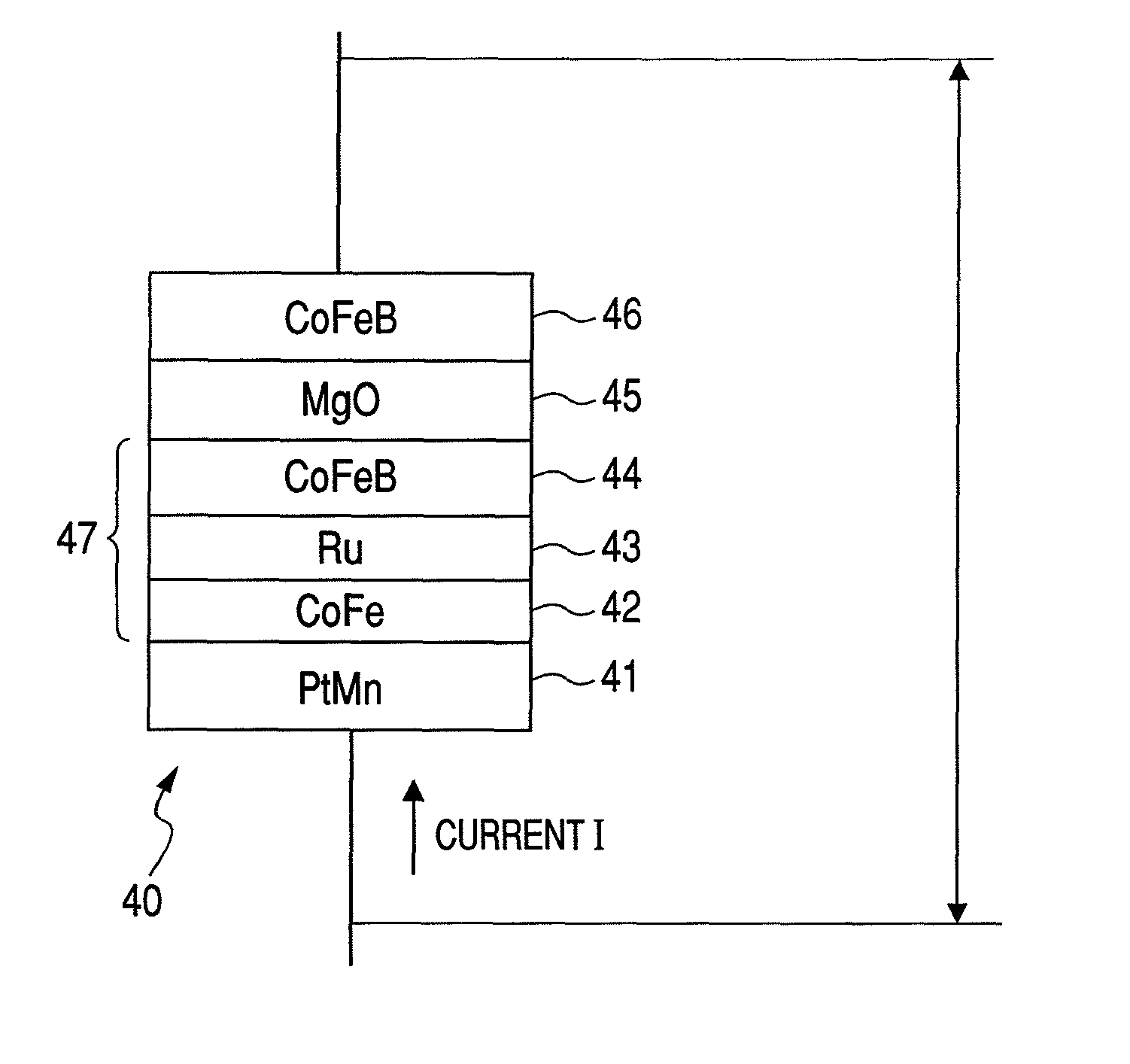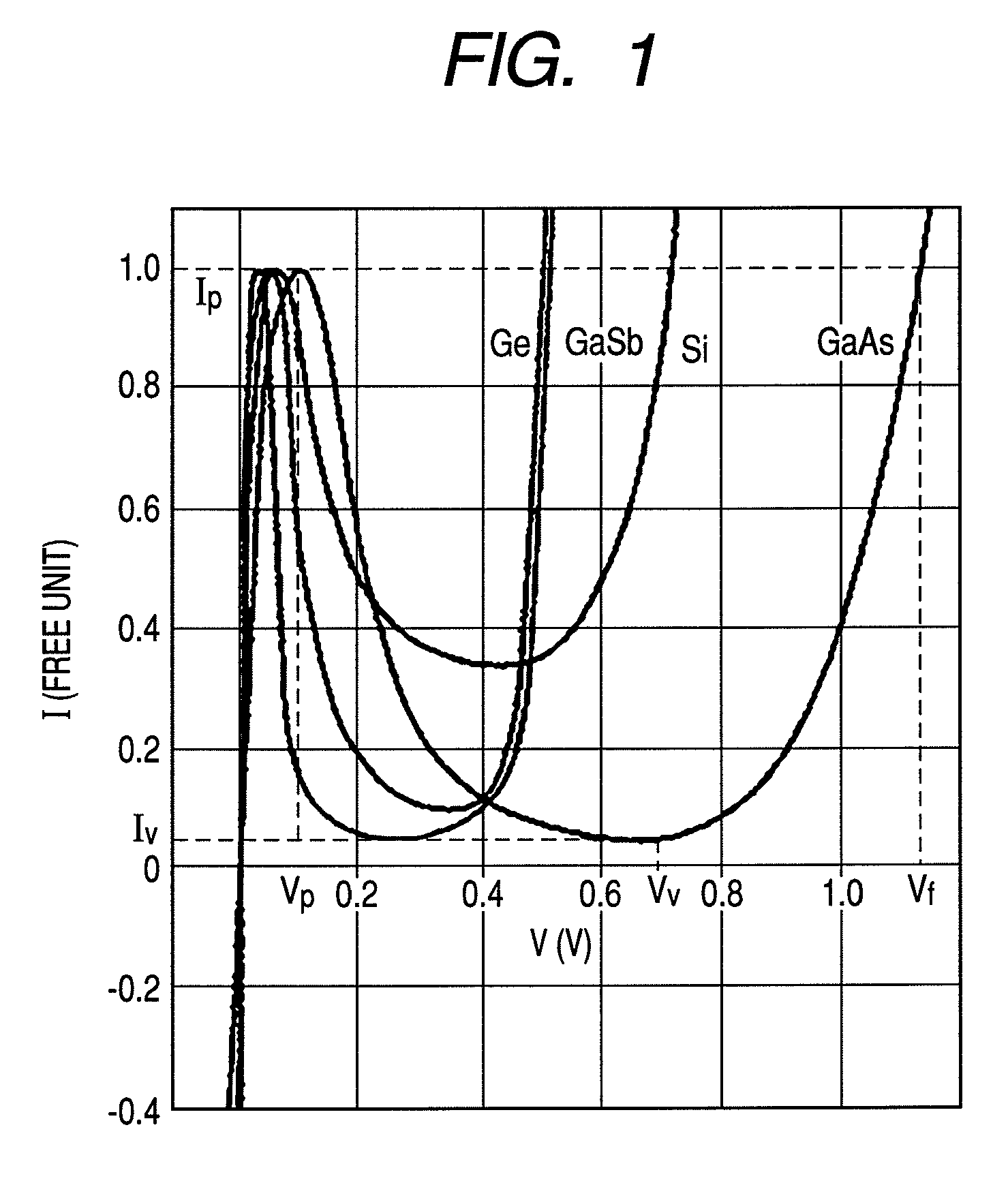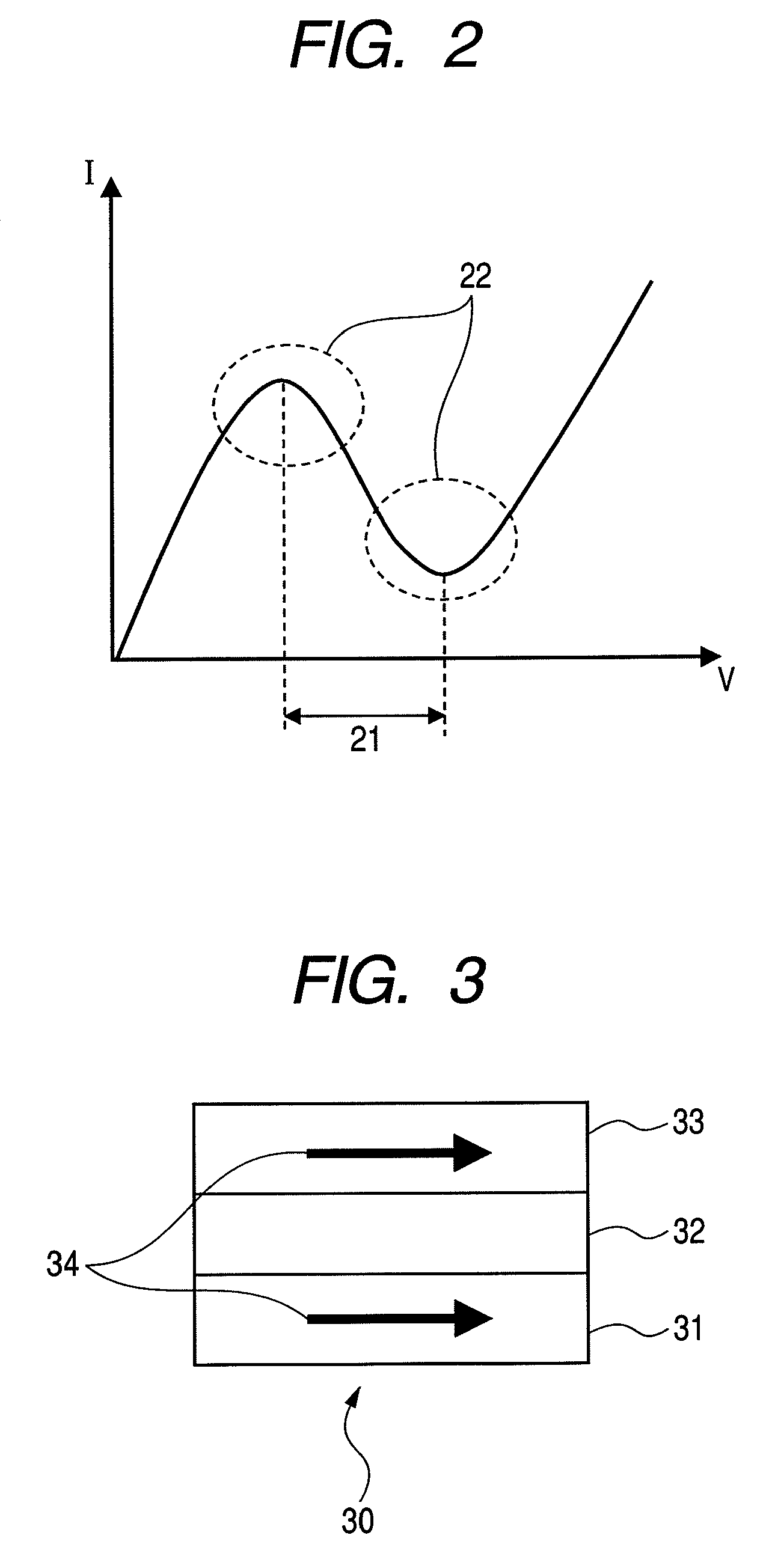Negative-resistance device with the use of magneto-resistive effect
a negative resistance and magnetoresistive technology, applied in the field of negative resistance devices with the use of magnetoresistive effects, can solve the problems that the negative resistance devices having a different voltage region cannot be prepared by the same materials, and the amplifying apparatus cannot obtain a stable gain, so as to achieve the effect of superior linearity
- Summary
- Abstract
- Description
- Claims
- Application Information
AI Technical Summary
Benefits of technology
Problems solved by technology
Method used
Image
Examples
embodiment 1
[0080]As is described above, in order to obtain a stable negative resistance in the present invention, it is necessary to provide the magnetization direction of the magnetic free layer of a magneto-resistive device which is used in a negative-resistance device so as to be stable only in a state of being parallel to the magnetization direction of a magnetic pinned layer.
[0081]An example of the negative-resistance device satisfying such a condition is illustrated in FIG. 8. A negative-resistance device 80 in FIG. 8 includes a magneto-resistive device 89 including a magnetic pinned layer 81, an intermediate layer 82 and a magnetic free layer 83, and electrode layers 84 and 85 for applying voltage to the magneto-resistive device 89. The electrode layers 84 and 85 are formed from a metal such as copper and gold having high electric conductivity. The negative-resistance device 80 is further provided with means for applying the external magnetic field to the magneto-resistive device 89 in ...
embodiment 2
[0085]In the above described Embodiment 1, the negative-resistance device is configured so as to cause continuous magnetization reversal by realizing a stable condition in the device only when the magnetization directions of the magnetic free layer and the magnetic pinned layer are parallel through applying the external magnetic field to the magneto-resistive device, and by controlling or modulating the magnetization reversal of the magnetic free layer. However, the magnetization reversal can be also controlled by using a shift of the hysteresis region in characteristics of change of resistance with respect to external magnetic field instead of applying the external magnetic field.
[0086]The example will now be described with reference to the spin valve type of a magneto-resistive device 40 illustrated in FIG. 4. A hysteresis region 51 illustrated in FIG. 5 is shifted to right and left on the graph by changing the film thickness of an intermediate layer 45 of a magneto-resistive devi...
embodiment 3
[0095]When RP is defined as an electric resistance of a magneto-resistive device in which the magnetization direction of the magnetic free layer is parallel to that of the magnetic pinned layer, and RAP is defined as an electric resistance of a magneto-resistive device in which the magnetization direction is anti-parallel, a magnetoresistance ratio (MR ratio) of the magneto-resistive device is defined as (RAP−RP) / RP. A peak valley ratio in current / voltage characteristics is determined by the magnitude of the magnetoresistance ratio. Therefore, the peak valley ratio can be increased by using a magneto-resistive device showing a large magnetoresistance ratio, and accordingly the negative-resistance device can be obtained which is suitable for application to an oscillator, an amplifier, a mixer, a switching device and the like. On the other hand, a magneto-resistive device showing a small magnetoresistance ratio may not cause sufficient negative-resistance characteristics, even though ...
PUM
 Login to View More
Login to View More Abstract
Description
Claims
Application Information
 Login to View More
Login to View More - R&D
- Intellectual Property
- Life Sciences
- Materials
- Tech Scout
- Unparalleled Data Quality
- Higher Quality Content
- 60% Fewer Hallucinations
Browse by: Latest US Patents, China's latest patents, Technical Efficacy Thesaurus, Application Domain, Technology Topic, Popular Technical Reports.
© 2025 PatSnap. All rights reserved.Legal|Privacy policy|Modern Slavery Act Transparency Statement|Sitemap|About US| Contact US: help@patsnap.com



